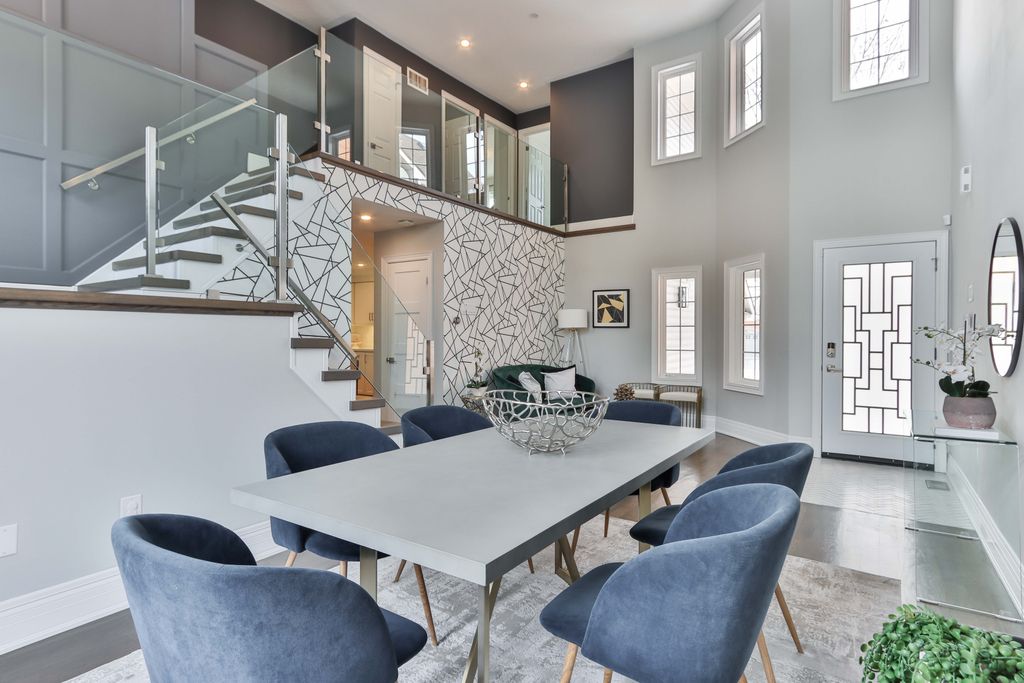Creating the perfect indoor plant-growing environment is an art as much as it is a science. The balance of light, humidity, temperature and more can be delicate to maintain. Yet, mastering these elements will ensure your leafy companions thrive in their indoor home.
You're already aware that each type of houseplant has its own specific needs when it comes to care. And you know that getting this right isn't always easy.
This is where understanding the nuances of creating the perfect indoor plant-growing environment becomes invaluable. It's not just about keeping them alive - but allowing them to flourish!
The Importance of Creating the Perfect Indoor Plant Growing Environment
Realising the peacefulness and pleasure that a flourishing indoor garden can give, it is evident why making an ideal environment for your plants is indispensable. It goes beyond aesthetics; we're talking about their very survival and optimal growth.
To succeed in this endeavour, understanding each plant’s needs is key. Various factors come into play here - light intensity, temperature range, humidity levels, soil composition, and watering frequency.
Nailing Down Your Indoor Garden Setup
Indoor gardening might seem daunting at first glance, but don't worry. Just like any challenge worth undertaking, it gets easier with knowledge and practice. The secret lies in replicating nature within our homes or offices as closely as possible.
You see when we take on the responsibility of nurturing these green companions indoors, they become reliant on us to meet their requirements. This means mimicking natural conditions, such as daylight hours for light-loving species or providing sufficient moisture for those originating from tropical environments.
Light Requirements for Indoor Plants
The health and growth of indoor plants are significantly influenced by their light requirements. Distance between plants and light sources is critical to their survival, as they derive food from it.
Maximising Light Intensity in Your Indoor Garden
Strategic arrangement of your garden setup becomes essential to provide adequate light for optimal growth. For example, plants with smaller, harder leaves can tolerate more intense sunlight and prefer to be placed near a window. On the other hand, plants with delicate or thin leaves thrive under bright but indirect sunlight.
These distinctions play a significant role in determining the placement of each plant within your indoor space. As plants grow larger over time, it is vital to ensure that all foliage has access to sufficient lighting at every stage of development. Grow tents in the UK can also be helpful to ensure your plant gets enough light all year round.
Using a Light Meter to Optimise Plant Growth
A valuable tool for optimising plant growth is a light metre. This device helps you assess whether your indoor gardening setup provides enough light for each type of plant species you are nurturing.
The light metre measures foot candles, which are units that indicate the amount of light reaching an object from its source. This makes it easier to adjust the positioning or tweak artificial lights when natural daylight is not sufficient or consistent throughout the seasons.
Choosing the Right Soil and Potting Mix: A Key to Indoor Plant Health
The secret to thriving indoor plants often lies beneath the surface, in the soil. The significance of soil moisture in sustaining healthy plants cannot be underestimated. But what makes a potting mix ideal for your leafy companions?
Benefits of Using a Well-Draining Potting Mix
A well-draining potting mix like Miracle-Gro's ensures that water doesn't stagnate around roots, which can lead to root rot and other diseases.
"Perlite-based soils are favoured by most indoor plants due to their ability to hold just enough water while allowing excess moisture to escape."
– A Gardening Enthusiast
This balance between retention and drainage is crucial when selecting appropriate potting soil for your indoor greenery.
Fertilising Your Plants Naturally with Compost Tea
Beyond choosing optimal soil, nourishing your plants appropriately also plays a significant role. Organic fertilisers can provide necessary nutrients without introducing potentially harmful chemicals into your home environment.
- Nutrient-rich: Compost tea provides essential elements needed for plant growth directly at the root level.
- Disease prevention: Besides acting as a fertiliser, compost tea aids in disease prevention, enhancing overall plant health.
Mastering Humidity: A Vital Component for Indoor Plant Growth
The importance of humidity in the realm of indoor gardening cannot be underestimated. It is worth noting that most houseplants thrive better in conditions that are more humid than what an average home provides, highlighting the significance of humidity for indoor plants.
Misting Plants: A Simple Way to Increase Humidity
Increasing humidity levels around your green friends does not have to be complicated. One tried-and-true method is misting, a straightforward process where you spray a fine layer of water onto plant leaves. This water then evaporates, raising the moisture levels within their immediate environment.
"While misting can indeed help elevate humidity levels effectively, it is crucial not to overdo it as excessive dampness could lead to issues such as mold or fungal growth."
To avoid these pitfalls while still increasing humidity in growing environments, moderation remains key when utilising techniques like misting.
If you are seeking an alternative approach to managing dry air conditions that offer greater control over moisture input without risking oversaturation from methods like misting, consider using a humidifier.
Conclusion
So, you've embarked on the journey of creating the perfect indoor plant-growing environment. It's a delicate balance that involves understanding the light requirements, selecting the right soil mix and maintaining optimal humidity levels, amongst other factors. By researching in advance and figuring out what your plants need, you can help them thrive indoors.



